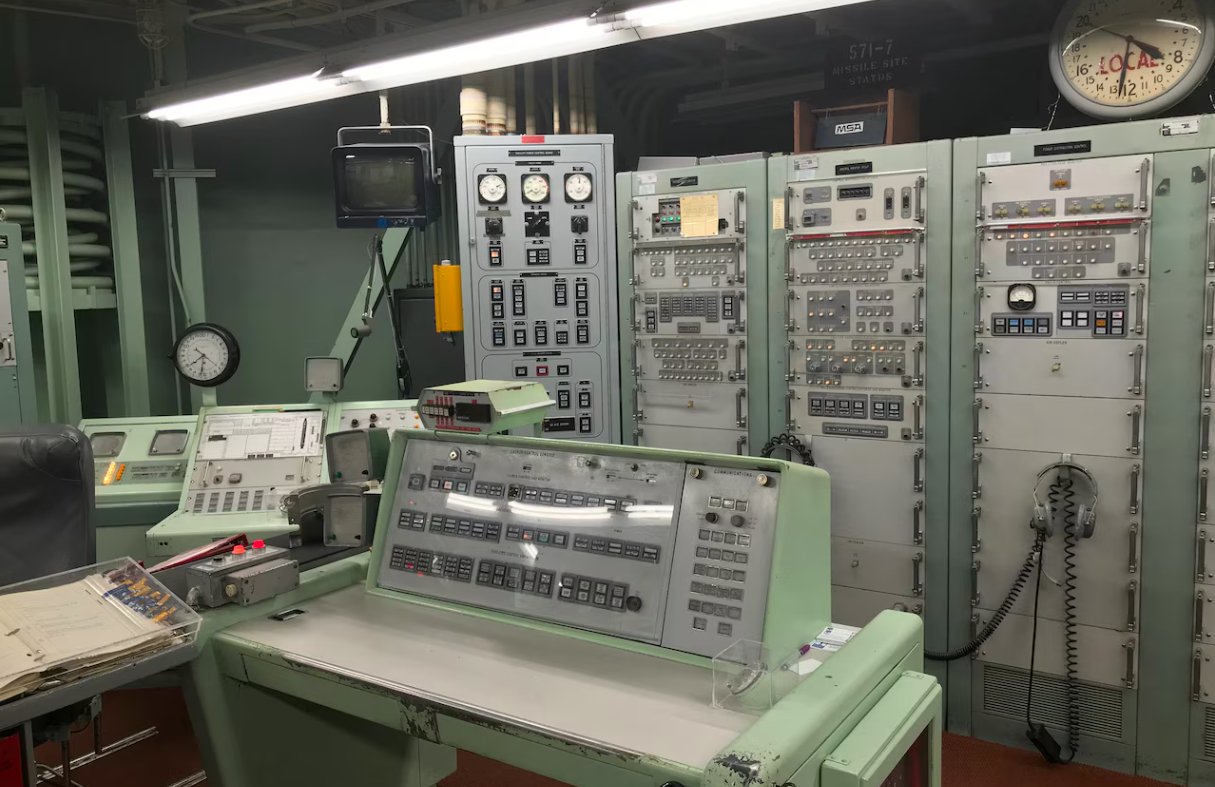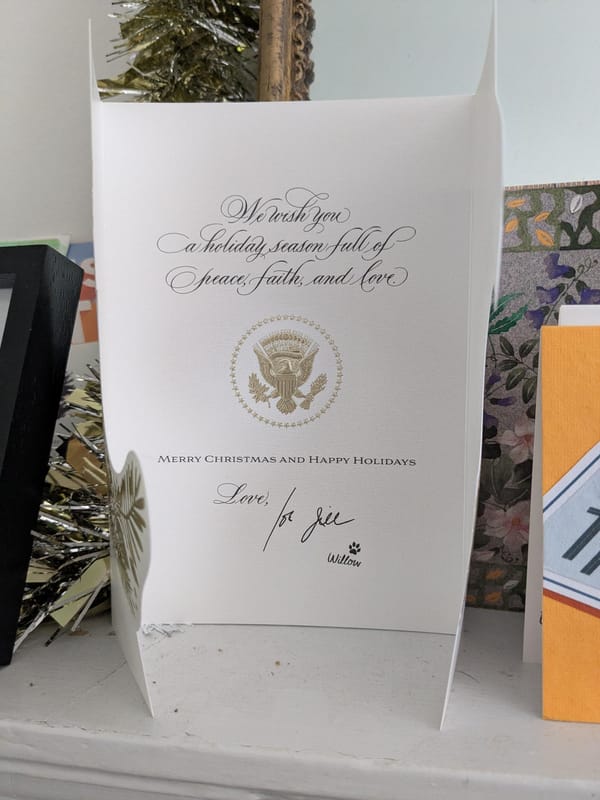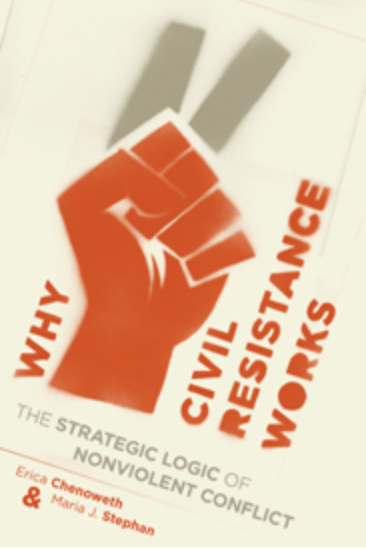The Plan #1: The End of the World

Welcome to the first installment of the main event! New installments will be made on Tuesdays, and continue to unroll this longer, slower, narrative version of The Plan. I think this is important not just to be accessible and enjoyable, but also because there is a difference between knowing something well enough to repeat it, and knowing it deeply enough that you can act on it. This story is something that I've let sink into my bones, and it's fundamentally changed how I approach the world. I want to give you that same opportunity.
At the same time, the urgency of the moment demands a different approach. There are things that we need to prepare for in the coming years, yes – but there are also things that we need to do, now. These are the things that I'll release on Thursdays – and I'm already very excited about the one that's on deck.
I will mention again that the text installment below is just a piece of the audio episode that was released on Sunday – so if you listened to that, here's your chance to revisit the parts you missed when the phone rang. Or, if you don't like reading, go listen to that! But in general, Sunday audio episodes will be supplementary, not overlapping, content.
Finally, I want to say I am thrilled to welcome all of the new members, both the people and I know and the ones I don't yet. I look forward to us making something very special together.
The Plan
Prologue
There were five of them that night.
Most of the details are gone now, some lost and some hidden, but a few things, we know for certain. We know that the operation took place in the early months of 1987. We know that it was run in an inconspicuous town just north of the American border.
We know that these five men – their names, still, never made public – had a particular way of seeing the world. A way of making decisions that, though they were not told this, set them apart in a way that the operation needed. That NATO needed. In this teetering, nuclear, breathless moment of time, the men were there because NATO wanted more than anything to know what they – these five – thought the adversary would do next.
This situation had come about as NATO was conducting quiet operations on the border of its Soviet counterpart. And we know NATO was doing that because its counterpart, the Warsaw Treaty Organization – what most people called the Warsaw Pact – was conducting operations of its own.
We can imagine that the chairs were hard and, if there was a carpet, that it was hard too. And that as faintly sweating palms begin to slip against styrofoam coffee cups, all eyes in the room turned to them.
On the map, the first thing the five men saw were troop movements. Movements -- back. Away from the point that the commanders had said the Soviet troops would be heading. But in the complicated strategic dance, these movements could have been a good thing, and they could have been a bad thing. Which was it? This was exactly the kind of decision the five men had been brought there to make.
And they decided it was a bad thing.
After that, the escalation happened quickly.
The five men saw threats, NATO listened to them, and moved accordingly; Warsaw recognized the aggression, and met with its own. These decisions were made quickly, with a consistency born of confidence – not knowing that what they were doing was, it would turn out much later, *ten times* more aggressive than a steadier hand would have been. But the five men did not know this, then, and NATO trusted them. More coffee, more movements, more decisions – the whole thing only took a few minutes. So it was that very rapidly, unknown to almost every American, and to every Soviet citizen, the world was on the brink of nuclear war. And all the eyes that knew where to look were on the five men who had brought us there.
But that was when the lights went up, and the five NATO commanders became undergraduate psychology students again. The Warsaw Pact turned back into the two professors who had paid them each $5 for the evening, who thanked them for participating, and set up the room for the next group. They needed more data, to be certain.
But the pattern was already becoming clear.
Bob Altemeyer and Gerry Sande had been running this little war game for a while now. They would recruit students, and form them into carefully chosen groups of five. These groups were told that they were playing NATO, and that they would be facing off against a team playing the Warsaw Pact — but in reality, the two professors would be playing the Warsaw Pact themselves. This way, they could control exactly how the “enemy” responded. The Warsaw Pact — the professors — would start by making intentionally boring, or ambiguously threatening moves. Retreating. Staying still. Doing exercises. This way, different NATO teams might have different interpretations of the threat. Then, every time NATO made an aggressive move, the Warsaw Pact would make one too. But — every time NATO did *not* make an aggressive move, the Warsaw Pact would *not* make one, either. War was met with war – peace, with peace.
However this was something some of the teams never had the chance to realize, because they saw every single move as threatening. These were the 10x teams, the ones who rushed to conflict an entire order of magnitude faster than their classmates. It was with these teams that missiles were always armed by the end of the exercise.
As psychology professors, Altemeyer and Sande were asking — Why? What kind of person would threaten the fate of the world, so fast, and over so little?
Altemeyer in particular — or, “Dr. Bob” as he prefers — would go on to spend the rest of his career on this question. His decades of work have reshaped our understanding of these cataclysmic decision makers, and we will get to know him much better in a few chapters. But no matter how big his contribution, it was far from the first. Ever since the Holocaust transformed the field of psychology, with its leading minds fleeing Europe, and devoting their lives to understanding what had happened there, we have collected almost a century of modern research on the thinking, and the thinkers, that lead to catastrophe. So why, out of all these hundred years of scholarship, should we start with this one particular incident from the middle?
In this particular case, it was just a simulation — but it was a simulation of a kind of event that happens every day. More often than not, these events are mundane. Sometimes they take place in lavish halls and glass boardrooms, but they also happen in boring rooms with uncomfortable furniture and bad coffee. They are simple and real and often over very quickly. And you are not there — but they change your life.
There is also nothing pretend about the patterns of decision making that this study illuminated for the world. There is nothing pretend either about the scale of the consequences that small numbers of people, whose names we may not ever know, have on our lives. I chose this one study to show clearly what the stakes are, for all of us.
The stakes are — everything.
We, humanity, possess the tools to destroy ourselves. In many different ways, and many times over. Whether by nuclear weapons, or an apocalyptic climate, or engineered viruses that give the flu the power of the bubonic plague — whether we destroy ourselves utterly, or only cripple ourselves in a way from which we can never recover, all of these possibilities exist at our fingertips now. Whether we run towards them quickly or slowly, on purpose or by accident, in this game we are all playing, every, single, thing, is on the table. Yet even with their own hands holding the cards that will make the difference, there are some people who will make good decisions, and some – who will not.
This story is about the people, who make the decisions, that affect the rest of the world. It is about the effects that we want, and the effects that we do not want, and the ways in which we might push things in the better direction. It is also about —
You.
For all of its squirming, uncomfortable, Chosen One, superhero-level claim, for all the skepticism you might feel, or eagerness to rush to the rescue, this is a story about the fact that as we look for help, as we look for hope, against everything there is out there —
You are the only hope we have.
Over the next 300 pages, my goal will be to convince you of that.



